African Violet Plants need to be watered depending upon each plants individual environment. Depending upon whether African Violets are in a hot, dry, comfortable or cold environment, the frequency and amount of water changes.
Below are common questions answered about watering African Violet plants and hopefully you will be able to pick up some useful TIPS for growing African Violet plants.
How to tell if your African Violet plants need watering?
- Visually if the middle leaves of the plant look droopy, dull or limp it may be time to water the African Violet. If the leaves are firm, crisp and shiny then they have enough water in them.
- If the droopy leaves are combined with dry top soil, then the African Violet needs to be watered.
- To check for dry soil, stick your finger gently in the soil (1/2 inch deep). If a lot of soil sticks to your finger and feels damp, then no watering is required. However, if your finger is clean and only a few dry specks are attached to your finger, then its time to water the African Violet.
- Remember to only water the soil when its dry, do not over-water. African Violets are very susceptible to over-watering, it can lead to root or crown rot as seen below.
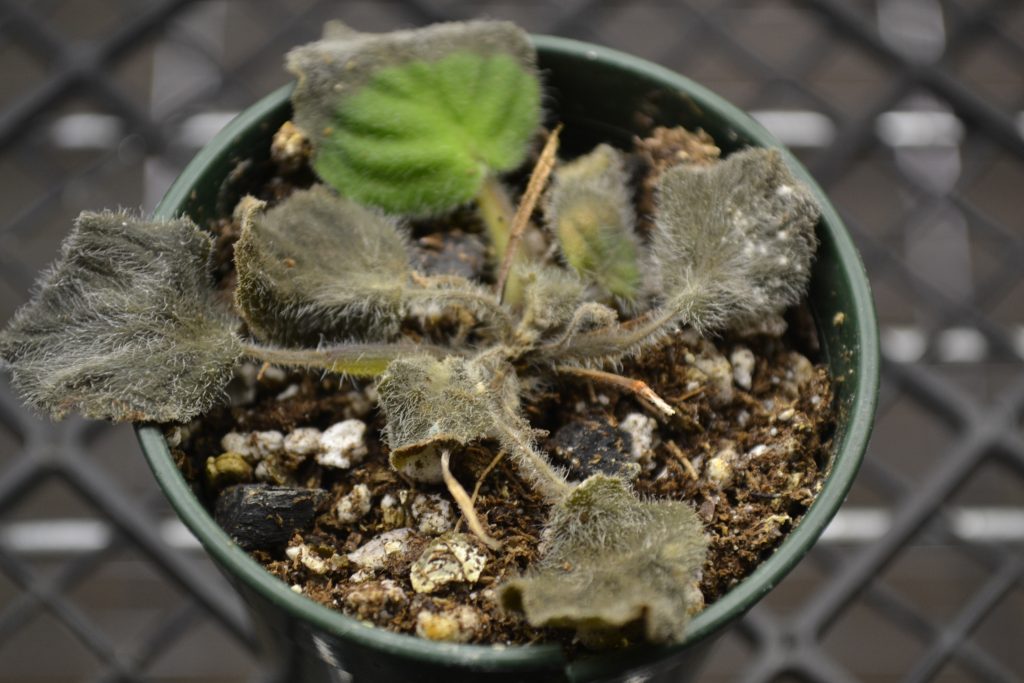
- Another way to check whether an African Violet plant needs to be watered, is to each time get a feel for the weight of the pot.
- After you have just watered, lift the pot up and feel how heavy it is.
- After a week again lift the pot, if its slightly lighter, then the soil is halfway dry and still moist.
- After a few more days, lift the pot, if it feels really light in weight then before, that means the soil is barely moist and dry.
- Its time to water this African Violet.
- After a few times, of feeling the weight of the pot, you will easily be able to judge whether your plant needs to be watered or not.
How to water African Violet plants from the top?
- For top-watering African Violets, you can use a watering can with a long skinny spout, or a small cup or a turkey baster.
- Fill the can, cup or baster with tepid, room-temperature water.
- Carefully water only the soil from the top. If needed, can gently push a few leaves to the side and water the visible soil through the space.

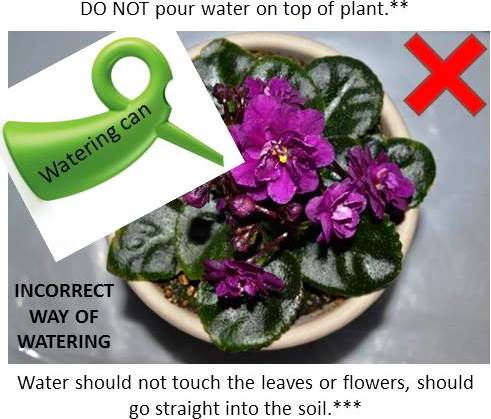
- Remember to never splash water on the leaves, crown, stems or flowers. Only water the soil.
- Also, never use cold or hot water, only room temperature water.
- Once you have watered your African Violet from the top, wait a few minutes, till the water comes out of the bottom of the pot.
- Discard the extra water from your tray/saucer or base and put your newly watered African Violet plant in its original location.
How to water African Violet plants from the bottom?
- For bottom watering African Violet plants, first fill up a tray, bowl or saucer with room temperature water.
- Place your African Violet plant in the water filled tray, bowl or saucer. Make sure at least one inch of the bottom of the pot is immersed in water or submerged in water.
- Wait for 20 minutes, allow the plant to absorb the water and the top soil to become moist.
- After 20 minutes, discard the leftover water in the tray, bowl or saucer.
- If there is no water left and the plant has absorbed all of the water in the tray, bowl or saucer then you can add more water and allow the plant to sit for another 10 minutes.
- After 10 minutes, again discard the extra water sitting in the tray, bowl or saucer and place the African Violet plant in its original location.
- Another technique for bottom watering is to place your African Violet plants on a tray of pebbles filled with water.
- Make sure to add enough water to cover the pebbles.
- Once, the water starts to dry out and the water level becomes low, add more water to the tray of pebbles.
- This method can also increase humidity around the African Violet plants, which they enjoy.
- This method is more suitable if you have a limited collection of African Violets.
- An important point to remember when bottom watering African Violet plants is to top water at least once a month. This way you are flushing out any extra fertilizer salt build up and refreshing the soil/roots from the top too.
Watering African Violet plants using Self-Watering pots:
- If you have a small African Violet collection, then self-watering pots can be a fuss-free option for watering.
- Since they take up a lot of space, its best used if you have a few African Violet plants.
- Self watering pots, consist of two containers/baskets. There is an inner basket/container which holds your plant and the outer basket/container which holds the water.
- The inner container which holds the plant, is usually porous in material and will absorb the water from the outer container.
- Sometimes, the inner container will have openings at the bottom or a cotton wick at the bottom, which makes absorbing water from the outer container easier.
- With a self-watering system, water usually needs to be added every 5-7 days. A water level indicator or marking will be present on the outer container.
- When using self-watering containers, remember to add a layer of perlite at the bottom of the inner container. Then place your African Violet plant with regular potting mix above the perlite layer. This will ensure adequate water drainage from the soil.
Examples of self watering pots for African Violet plants as shown below:
How to water African Violet plants using individual containers and wicks?
- For detailed information on how to water African Violet plants using individual containers and wicks please visit our post, “Wick Watering for African Violet Plants“.
What kind of water to use for African Violet plant watering?
- Always remember to use room temperature or tepid water.
- I use tap water to water my African Violet plants
- If you notice your older outer leaves dying with spotting, black edges or discoloration you may have chemicals in your water from municipal water suppliers causing these symptoms.
- In some municipalities, they add the chemical chloramine to the water as a purification agent.
- Chloramine damages the African Violet plant and if left untreated, the plants can die.
- The best way to know if Chloramine is present in your water is to request your water supplier to send you the composition of your water.
- Some municipalities have this transparent information on there website, the water source and composition reports are updated yearly.
- If you do have Chloramine in the water, then you will need to use another source of water. Either spring water from the grocery store or rain water. Do not use distilled water, as they lack certain minerals necessary for healthy African Violet plant growth.
- Once, African Violet plants have been damaged due to Chloramine, they can revert back to its healthy self once the water source is changed.
- Please note, that your home filtration system, cannot remove Chloramine.
- If you have Chlorine in your water, that is different then Chloramine, they are not the same.
- To remove Chlorine, let your water sit overnight in an open container and then use. This will allow the chlorine to evaporate overnight. Even if all the chlorine does not evaporate, it will certainly reduce the amount of remnant chlorine in the water.
- Rain water can also be used to water African Violets. However, if you live in a city with low air quality, high air borne environmental toxins and high pollution, then its not advisable to use rain water. As there as high chances of this water being polluted.
What kind of soil to use for optimum watering of African Violets?
- An African Violet soil mix which is too dense, retains water in the pot for longer periods of time which can result in root rot.
- A more lighter African Violet soil mix, can allow the water to flow/drain through the pot easily and prevent packed dense soggy soil.
- African Violet soil mix should be porous and provide adequate drainage. This can be achieved with the addition of a layer of perlite at the bottom of the pot and also perlite mixed in with the potting soil.
Below are perlite recommendations, useful for potting up suckers, as an additive to soil or even used a thin layer at the bottom of a pot for drainage.
- When potting up the African Violet plant, remember to keep the soil loose and gently add soil to the pot. Do not push down the soil too much in the pot, this will make the soil mix heavy and dense.
- African Violet plants like loose and light soil, making it easier to water. They do not like soil which has been pressed down tightly in the pot. This encourages water to collect in the dense soil and become heavy.
- For more information on African Violet potting mix, please visit our post, “African Violet Soil/Potting Mix“.
African Violet, perlite and other potting soil mixes shown below:
What are the symptoms of over-watering African Violet plants?
- Only water African Violet plants when they need to be watered. As a rule of thumb, its better to under water an African Violet, then to over-water.
- Over-watering African Violets, can lead to soggy soil, which can in turn lead to root rot (the roots absorb so much water, that they can no longer hold onto so much water and eventually rot).
- Following root rot, the crown will start to rot and the African Violet plant will eventually die.
- If the soil is soggy and wet, accompanied with browning/yellowing and limp leaves, then you have over-watered the your African Violet plant.


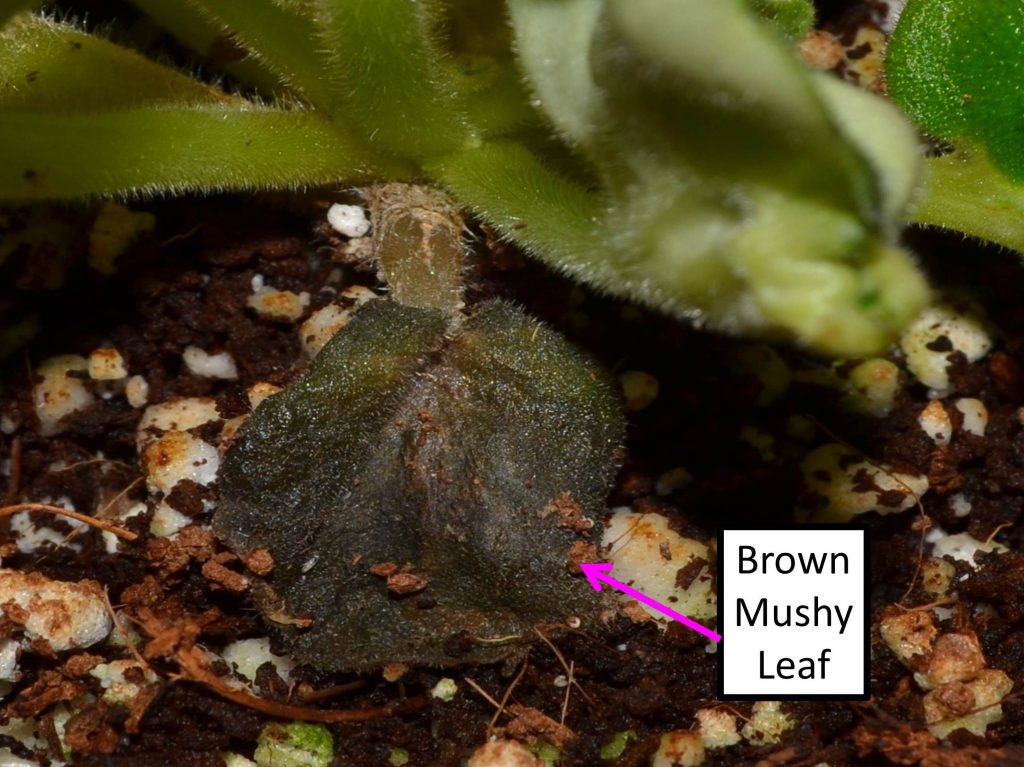
- Immediately take action, remove the yellowing leaves and gently remove plant from pot.
- Gently remove the old soil, not too much soil, as the African Violet plant likes to be root bound.
- Try to gently remove any roots that are rotting or mushy, brown in color.
- Then re-pot the plant in fresh dry soil.
- Do not water for at least a week, and then slowly start your watering schedule.
- If your African Violet plant does not recover, then root rot may have already occurred and the plant will be dead within a week.
- At this point, put down leaves to save the plant variety and to produce baby plantlets. For more information on leaf propagation, visit blog post, “African Violet Leaf Propagation“.
What are the symptoms of under-watering African Violet plants?
- If the soil of the African Violet plant seems dry and crisp on the surface and the sides of the soil are pulling away from the pot, then its time to water the plant.
- If the leaves lack luster and shine and start drooping along with dry soil, then its to water the plant.
- When you lift the pot and its really light in weight along with the above visual signs, then its time to water your African Violet plant.
Examples of self watering pots for African Violet plants as shown below:

*Our Affiliate Programs: We are a participant in the Amazon Services LLC Associates Program, an affiliate advertising program designed to provide a means for us to earn fees by linking to Amazon.com and affiliated sites.
Though we do link to many items on Amazon out of convenience to our readers, we do also participate in other affiliate programs that also pay us a commission for any purchases you might make through our links (at no additional cost to you!).



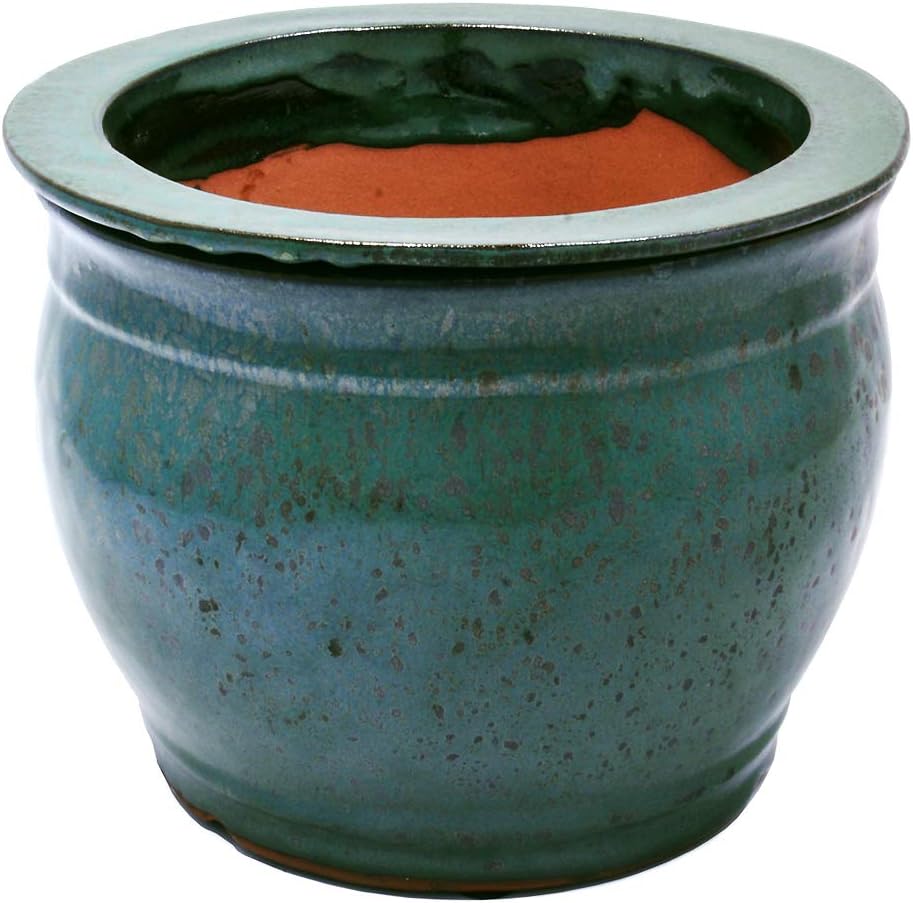








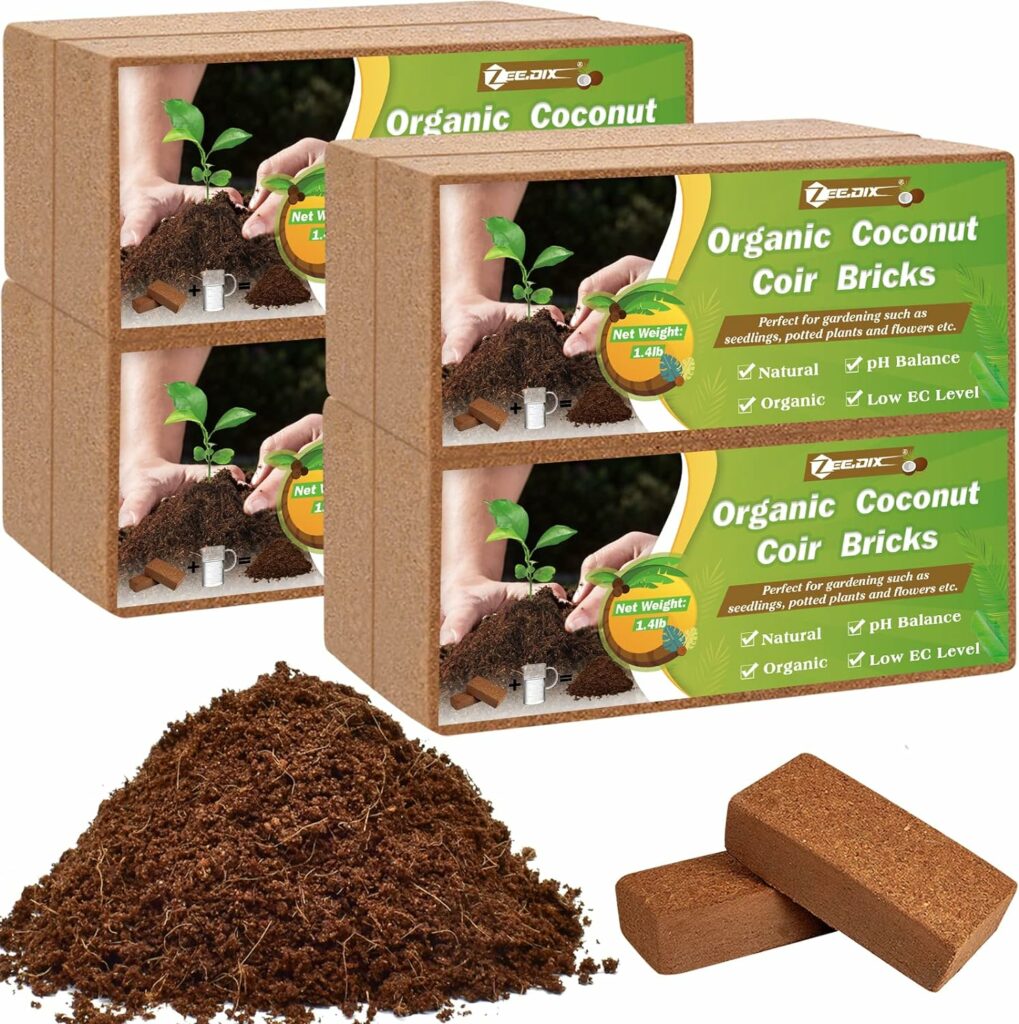
Please help i cannot get my African violets to flower strong healthy leaves..no flowers😥
Hello Astrid,
thanks for your message. There may be many reasons for African Violet plants not to flower. Did you change your soil recently. Are you regularly fertilizing your plant. Is there enough humidity in the room? Please check all these and make sure your plant hasnt gone through any external changes in a while. For me what worked best, was changing my watering method to wick watering. Suddenly all of my plants started forming buds. Hope this helps, BV
Hi, This is all great information and I am so glad to find your FB page!
I think the only bad thing about using the self watering pots with no drainage holes is the fact that you can’t rinse out any extra fertilizer and/or minerals. I have used them and find I do better with a regular pot and a saucer underneath to bottom water 🙂
Thanks for the information!!
Thank you Cathy for the additional information about self watering pots!
I found purchasing grow lights especially in the winter help to bring out flower buds on an otherwise healthy African violet plant.
This was a gift. I have never had an African Violet before.
Have 4 AV plants from an AV nursery blooming when I received in July. Repotted August in Sungro AV mix and use Optimara food. 2 wick watering, 1 on tray, 1 in self watering pot. 3 are blooming again all have doubled in size but when I checked ph it shows almost 8! How can I lower?
Hello Jo-Ann,
Thank you for your question. Yes, you are right, your pH does seem high. Did you check your pH right after watering? Sometimes, if you check immediately after watering, it will show up high, I think it has something to do with the water temperature. Generally can wait an hour after watering and then check the pH. If it still shows up high, then you can add pH down, its a solution available at local pet stores, aquarium stores or hydroponic stores. Its similar to this one, https://amzn.to/2YCG1zL, it can help lower the pH back down. The ideal pH for violets I think is around 6.5 – 6.8pH. Pretty much in the neutral range. Hope this helps. On a side note, how did you check your pH? I haven’t done this with my plants, just curious to know. regards, BV
I bought two blooming A Vs at the grocery store. Both blooming beautifully. Started watering with tap water that has set a few days. The pots they are in do not have bottom holes. They sit in a kitchen window w/about 6 hrs light. I’ve had them about 6 wks. Now all blooms have died. What did I do wrong?
Hello Jean,
Thank you for your question. Since you just bought them, its normal for the blooms to fade away while the plant is adjusting to its new environment. I dont think you did anything wrong. Does the soil seem wet/too moist. My concern would be since the pot doesnt have holes in it, whether the roots have enough drainage. Make sure to water very carefully for now, dont over water until you get a chance next spring to re-pot into a new pot with holes. Till then, you can remove all the dead / dried out blooms. If its cold in your area, during winter the plant growth slows down and it may bloom less frequently then in summer. You can try adding fertilizer, I would recommend, this optimara fertilizer, https://amzn.to/3oXUvCB, it produces small buds within 3-4 weeks of application, I use 1/2tsp in 1/2 gallon of water. Do the leaves look ok, they should be firm and bright green in color. Its ok if the older outer leaves look droopy or faded. But the inner leaves should have new growth from the center. Hope this helps, have a great holiday weekend! regards, BV
Hello, Article states OK to wick water. I am doing that now. A little concerned the soil might be too wet. How do I know the plant will not get too much water with this method. TY
Hello Jo-Anne,
thank you for your question. If after 2 weeks, the soil seems still wet and it never has a chance to dry out a little, then it could mean the wick is too thick. Also if the leaves start turning yellow, mushy or droopy, it means the soil is too wet and the roots are getting clogged. Let the plant grow for 2-3 weeks and see how it goes. Sometimes a wicked plant soil looks wet, but over time the plant adjusts and it will grow fine. Hope this helps, regards, BV
Can you put liquid fertilizer on bottom pot of a self watering African violet pot
Hello Eugene,
thank you for your question. Yes, you can put liquid fertilizer in the bottom of a self watering pot. BV
Good Day! How long can an African violet sit in water using a self watering pot? My plant has been in water (in the outer pot) for over a week but now the stems of most of the plant are more of a tan color and have become somewhat limp. The leaves are still green (maybe a bit lighter in color). Most of the flowers seem to have died. Sorry for the rather long description. Is my plant being over watered? Didn’t think this would happen with a self watering plant. Any thoughts/suggestions/advise most appreciated! Thank you!
What do you think about soil moisture meters? if you think they are helpful for beginners – is there one that you suggest? Thank you!
Hello, thank you for your question. A week seems too long for the violet to be sitting in water. I would assume few hours maximum the pot should sit in water. I would drain the water out and allow the soil to dry completely before adding new water to the pot. Yes it does seem like its been over-watered. You are correct, I dont think this should happen for a self watering pot. I thought the water gets sucked up and then a little bit stays in the outer pot, hope this makes sense, regards, BV
Hello, I have personally not used one myself. I usually just lift the pot up, it it seems lightweigt to me, then its time to water and if its slightly heavy, then its enough water. It seems to work for me 🙂 . BV
How often do you water true baby violets that have just come from a vendor like the Violet Barn. I know when to water my older plants and can tell by picking them up and also looking at the soil and leaves. But with these tiny violets in 2″ pots – they feel light by the next day after watering and feel like they need to be watered every 2 to 3 days. They look like they are planted in just vermiculite.
Hello Alisa, thank you for your question. For tiny baby violets, I would water once a week. Yes, sometimes vermiculite can feel light, but they do absorb water. Keep an eye on the plants and if the temps are high during the week, can water every 2-3 days if necessary. For baby violets, the roots are still delicate, not fully mature, dont want to over water, as the roots wont be able to handle so much water. Hope this helps. BV
What is the impact of joining a local African Violet club on the growth and success of your plants? How do these clubs contribute to the overall knowledge and community surrounding African Violets?
By joining a club, you will most likely learn something new. Since its a local club, the environmental conditions for the most part is the same as everyone else. If you have any problems with the plant, someone in the group may have gone through the exact same thing and can be of help. Its not always about the plants. These groups allow people of similar interests to come together, meet up, chat, discuss there area of expertise, share stories and feel like a place they belong. In todays world of loneliness, a club can be a reason to come out of isolation and meet up in person. It can be helpful emotionally and mentally. There is an added benefit of sharing plants with each other and advice. Hope this helps, regards, BV